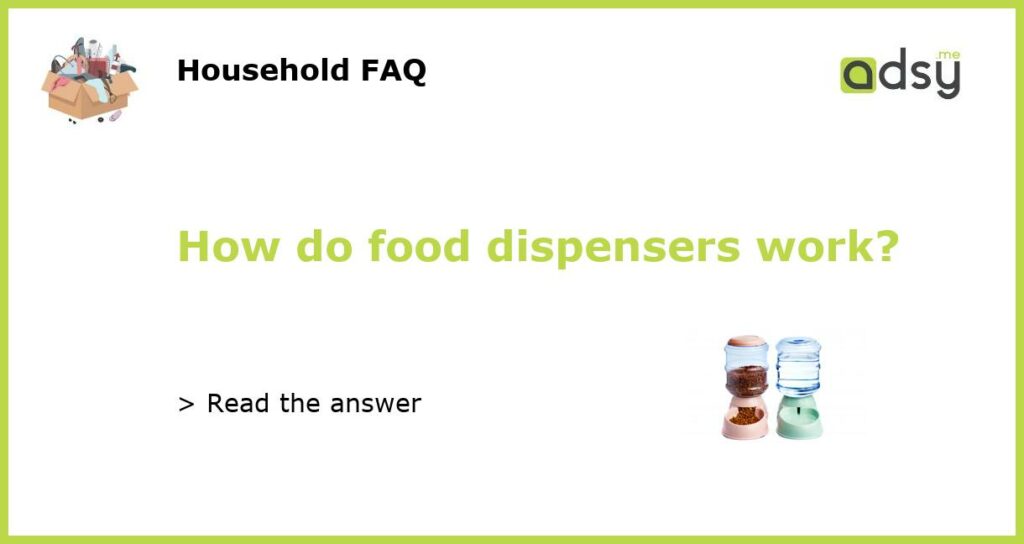Understanding Food Dispensers: What are They?
Food dispensers have become a popular tool in many households, especially for pet owners. Simply put, these devices are containers that automatically dispense food on a predetermined schedule or serving size. They come in different shapes, sizes and functionalities. Some are simple gravity-fed containers that drop food into the bowl, while others have complex electronic systems that enable remote operation and customization of feeding times.
Types of Food Dispensers: Which One Should You Choose?
Food dispensers come in different types to cater to different needs. Gravity-fed food dispensers work by utilizing the principles of gravity to release portions of food into the bowl. These containers are ideal for dry or semi-wet food that flows easily. Electronic food dispensers, on the other hand, use an electronic mechanism to dispense a predetermined portion size at set intervals. These devices are ideal for wet food that needs to be refrigerated to prevent spoilage. Self-programmable food dispensers enable pet owners to customize the feeding schedule and portion sizes remotely using a mobile app.
How Food Dispensers Work: The Basic Mechanisms
Food dispensers work in different ways, depending on their design and functionality. However, the basic mechanism involves storing food in a container and releasing it into the bowl using an opening or chute. Gravity-fed food dispensers simply utilize gravity to release food into the bowl. Electronic food dispensers, on the other hand, use a motor-driven gear system or conveyor belt to push or drop food into the bowl. Self-programmable food dispensers use a combination of electronic dispensing and remote control to dispense food according to a preset schedule.
The Advantages and Disadvantages of Food Dispensers
Food dispensers offer many advantages to pet owners, including convenience, consistency, and automation. They eliminate the need for manual feeding and enable pet owners to feed their pets on a regular schedule, even when they’re away. However, food dispensers also have their drawbacks. For instance, some pets may become too reliant on the dispensers, leading to behavioral problems such as overeating. Additionally, electronic food dispensers may malfunction or require frequent maintenance, which can be costly.
Are Food Dispensers Right for You?
If you’re considering a food dispenser for your pet, it’s essential to assess your needs and the needs of your pet. Food dispensers come in handy for busy pet owners who need to maintain a regular feeding schedule or for pets that need specific portion sizes. However, pet owners must also be aware of the potential pitfalls, including overreliance and malfunctions. With the right research and consideration, food dispensers can be a helpful tool for pet owners looking to simplify their pet care routine.






